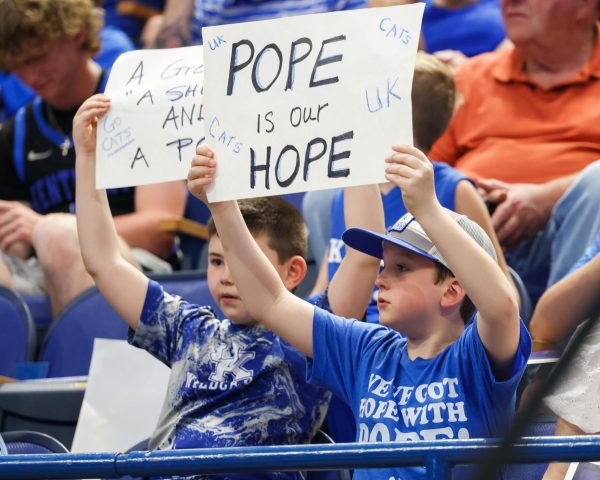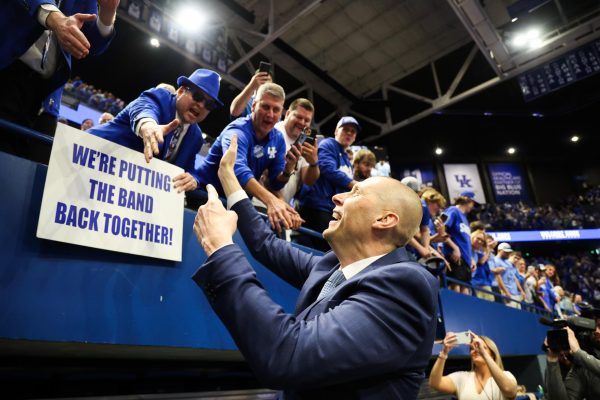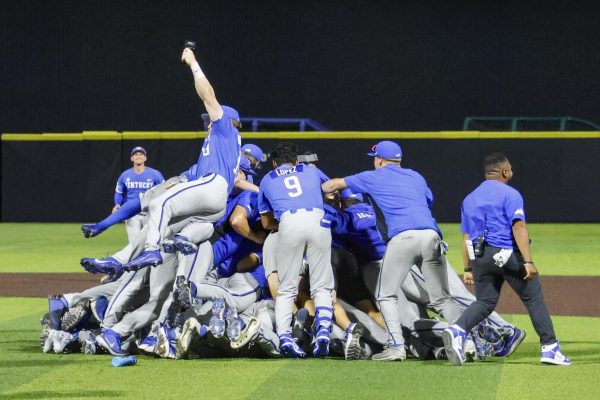A farewell to fairy tales: ‘Tangled’ ends a genre
August 20, 2010 – Lexington, Kentucky, USA – Martha Groppo, Features Editor of the Kentucky Kernel. (Credit image: © David Stephenson)
November 29, 2010
Disney says it’s finished with fairy tales — the audience for them just doesn’t exist anymore. Maybe “Tangled” will convince them otherwise.
Over Thanksgiving break, “Tangled” generated $69 million. That’s second place only to the heavily-anticipated-by-a-cult-following Harry Potter at $78.8 million. That sounds like a big difference, but the third place “Megamind”made $17.5 million.
The movie was a cute throwback to the animated films we went to see in theaters when we were little. Remember going to watch “Beauty and the Beast”? “The Little Mermaid”? “Aladdin”? Animation has certainly come a long way since those Disney classics were released, but the same primary elements are still there in “Tangled”: A beautiful princess (Mandy Moore), a handsome love interest (Zachary Levi), an evil witch, a few songs and, most importantly, a happily ever after.
The adaptation of the classic story has been tweaked for a modern audience. Grimm’s original tale of a lovelorn prince throwing himself out of Rapunzel’s tower into thorns and going blind isn’t exactly Disney appropriate. Rapunzel’s hair possesses magical powers that keep the story’s villainess perpetually young, and a major plotline is Rapunzel’s quest to realize she is capable of living on her own. Rapunzel’s love interest, Flynn Rider, is a suave thief — hardly Prince Charming in the traditional sense.
According to an article in the Los Angeles Times, the failure of the recent “Princess and the Frog” animated film, “prompted the studio to change the name of its Rapunzel movie to the gender-neutral ‘Tangled’ and shift the lens of its marketing to the film’s swashbuckling male costar, Flynn Rider.” Disney says it wants more gender neutral movies. The “Princess and the Frog” failed because it was targeted too narrowly at little girls.
The Los Angeles Times article quoted one children’s media expert as saying “By the time they’re 5 or 6, they’re not interested in being princesses. They’re interested in being hot, in being cool. Clearly, they see this is what society values.”
The expert has a point — societal values have clearly shifted. But have they shifted enough to eradicate the appeal or value of the fairy tale altogether?
I would venture to say they have not. Have you walked into a Disney store recently and seen all the dolls, princess costumes and tiaras? Have you seen the iconic castle at the heart of Disney World? Or the box office numbers this weekend?
Clearly, fairy tales aren’t out. The “Princess and the Frog’s” lackluster performance may have less to do with the fact that it was a princess movie, and more to do with the fact that it is full of voodoo dolls, creepy dark scenes and a sidekick character, a bug that gets squashed at the end of the movie. It’s probably a wise business decision to make movies that appeal to a broad audience, but “Sleeping Beauty” and “Cinderella” continue to make Disney millions — without gender neutral names like “Dozing” or “Shoeless.”
“Tangled” may never join the ranks of Disney classics like “Snow White,” “The Little Mermaid” or “Beauty and the Beast.” It doesn’t have a spectacular musical score and the adaptation is less than traditional. Still, our kids might look at it one day as the last in the long line of princess movies that began in 1937.
And my bet is they will still be watching them and loving them — tiaras and all.
Martha is a journalism and history junior. E-mail [email protected], or follow her on Twitter @KernelGroppo.




















































































































































